A bay area, to offer rich scenic beauty with historical sites, and the white sand beach.
Wakanoura (和歌の浦), in Wakayama city is a good choice for escaping to a less-known part of the Kansai area. This scenic bay area was praised for its beauty in the Man-yo-shu, the oldest collection of Japanese poems. The whole area is designated as a Japan Heritage “Treasure House of Scenic Beauty”. Visitors can enjoy seasonal beauty of Wakanoura, with the daily inflow and outflow of the ocean.
When the Emperor Shomu made a trip to Wakanoura in 724, he was delighted by its scenery of six small islands in the bay creating a image of the string of jewels floating on the surface of the water. Since then, Wakanoura continues to attract people and poets as the “holy place” of the poetry. However, the landscape today has changed since old times, you can still experience its history and scenic beauty. Traditional Japanese craft industries such as lacquerware and umbrellas are still flourishing here.
Enjoy exploring Wakanoura, scenic bay area.
Access : Wakanoura is about 90-minute south of Osaka. Take the JR Hanwa Line from Tennouji station to JR Wakayama Station. Transfer to the JR Kinokuni Line to Kimiidera Station.

1. Kimii-dera Temple (紀三井寺)
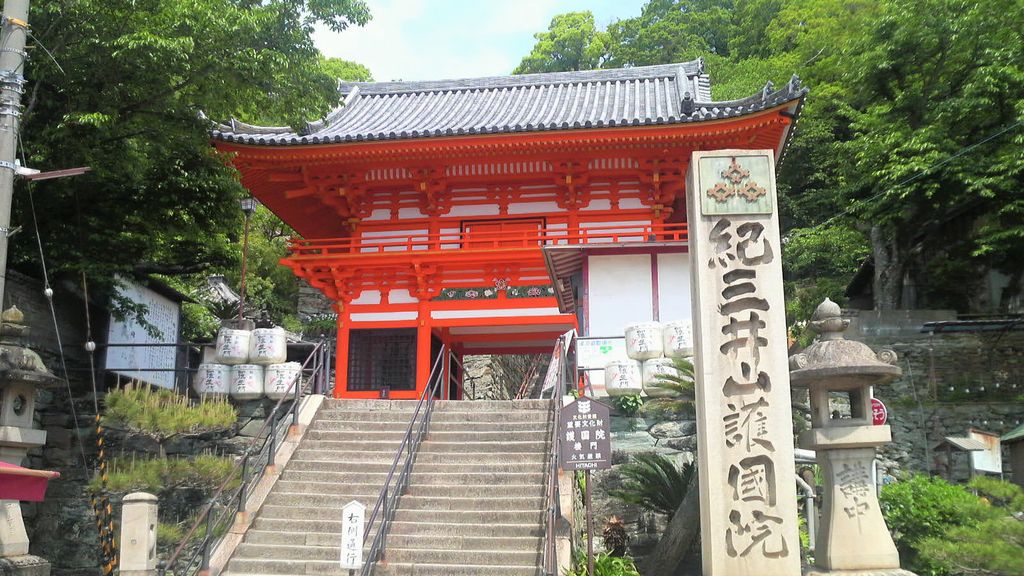
Kimii-dera Temple, an impressive temple with golden Buddhas, sitting on the slopes of Mt. Nagusa, is a good place to start exploring. The temple is well known for its early-blooming cherry blossoms. The temple also offers a sweeping view of the Wakanoura Bay. If you look carefully, you can find a small pagoda on a tiny island by the town’s edge. It is Imose-yama, the only remaining island of the six islands.
To Imose-yama, 3-minute on the Wakayama city bus No. 4-6, 11-17, 20-27, 117, 121, 122 to Tsuya bus stop and 7-minute walk, or you can reach on foot in 30-minute.

2. Imose-yama (妹背山)

Imose-yama is one of the six islands remained. It is situated on the way to the Kataonami Beach. At the approach to the island is Sandan-kyo, a low, stone bridge, modeled after a famous bridge in China. The bridge was made by the order of Tokugawa Yoshinobu (1602-1671), the lord of Wakayama Castle, the sun of the Shogun Tokugawa Ieyasu. You can find the legacy of Yoshinobu on Imose-yama. Kankai-kaku, a pavilion, used for viewing Mt. Nagusa and Kimii-dera is on the far side of the island. The current building is a copy of the original wooden pavilion. And Kaizen-in Pagoda stands behind it, which was built in memory of his mother.

3. Around Furo-bashi Bridge
Furo-bashi bridge (不老橋), built by Tokugawa Harutomi in the mid-19th century is an iconic bridge in the area. This beautiful arched stone bridge is really matched with the scenery of Wakanoura.
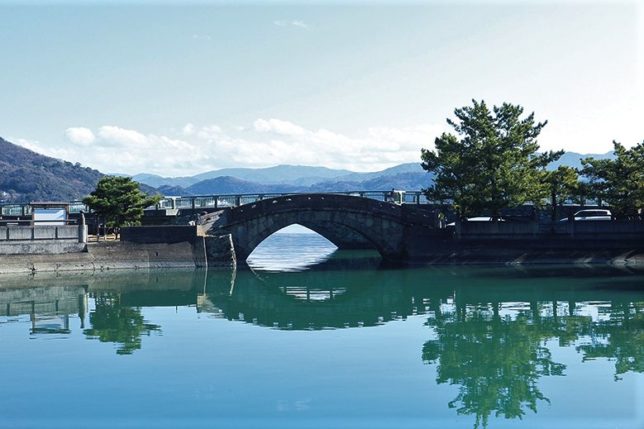
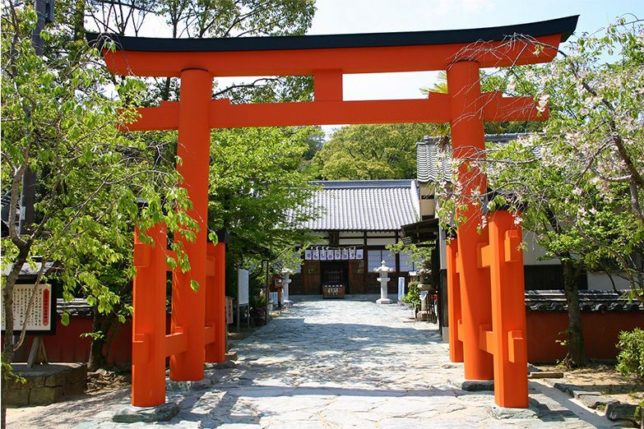
Tamatsushima Shrine (玉津島神社), facing Imose-yama is lying between two hills nearby Furo-bashi Bridge. It enshrines several deities including, the goddess of waka poetry. In the precincts, there are a few stone monuments engraved with famous poems praising the beauty of Wakanoura. Visitors can easily climb to the both of hills, Tengu-yama and Kagami-yama to enjoy a panoramic view of Wakanoura. Shiogama Shrine is also located at the Bottom of Kagami-yama, you can stop by.
To Mitarai Pond, 10-minute walk along the canal.

4. Along the canal to around Mitarai Pond
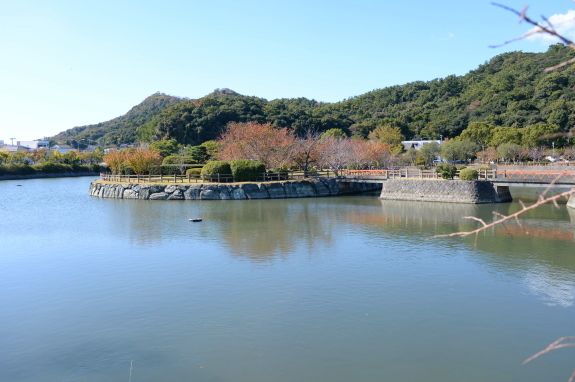
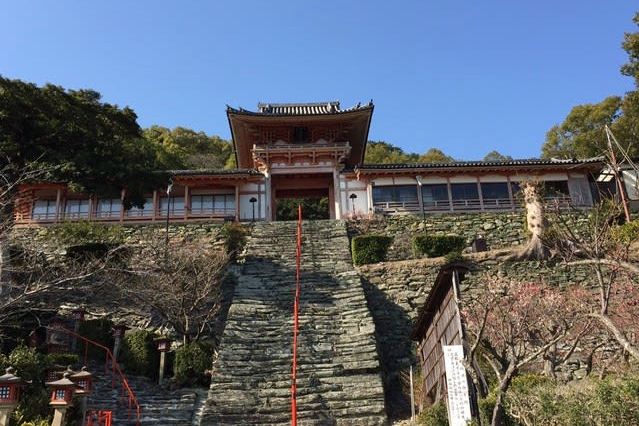
The canal flowed under Furo-bashi bridge leads to Mitarai pond (御手洗池) and the grand gate of Wakaura-Tenmangu Shrine (和歌浦天満宮神社), located at the Bottom of Mt. Tenjin behind the pond. A wall of crude stairs leads you up to the shrine. The shrine is dedicated to Tenjin, the god of learning, and allowing you to have a great view.
Kishu-Toshogu Shrine (紀州東照宮神社), built by Tokugawa Yoshinobu is also located on the neighboring hill overlooking the tidal flats. The Shrine dedicated to the spirits of Tokugawa Ieyasu, his father. You can get to a small, richly-painted shrine with a thatched roof after 108 steep stone stairs.
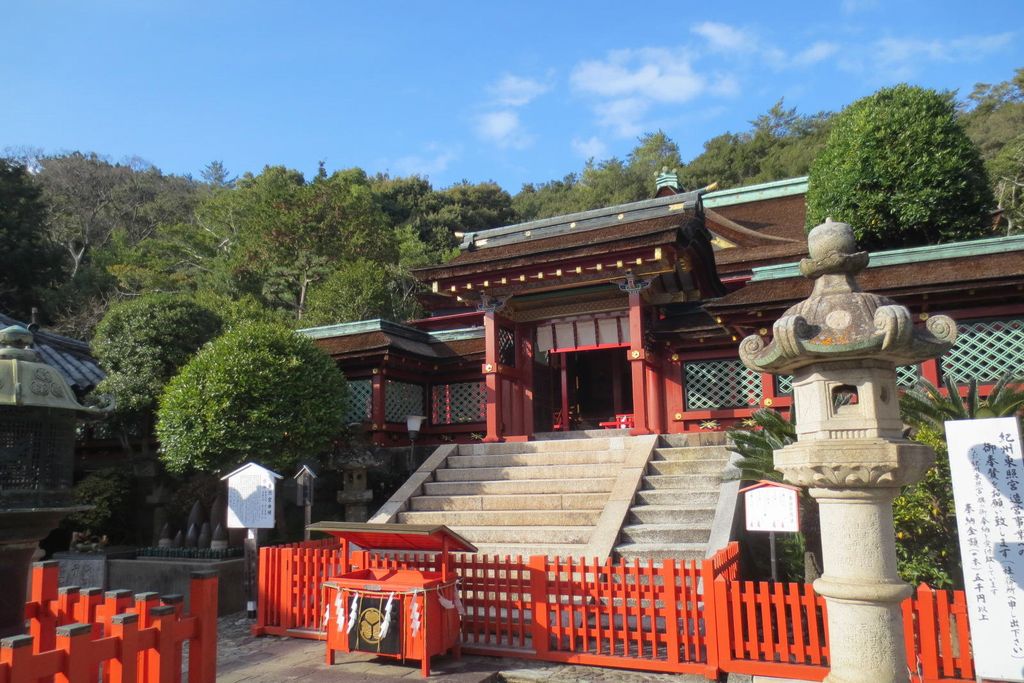
Every year, Waka Festival takes place at Wakanoura in mid-May. The festival was started as the Toshogu Shrine festival by Tokugawa Yoshinobu in 1622. The spirit of Tokugawa Ieyasu on the portable shrine is carried down the steep stairs. During the festival, A large procession of nearly 1000 people, in unique period costumes, parade through the streets of Wakanoura.
To Kataonami beach, about 15-minute walk.

5. Kataonami Beach (片男波)
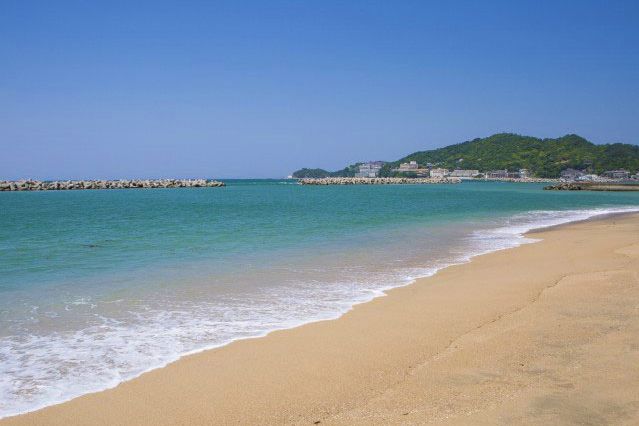
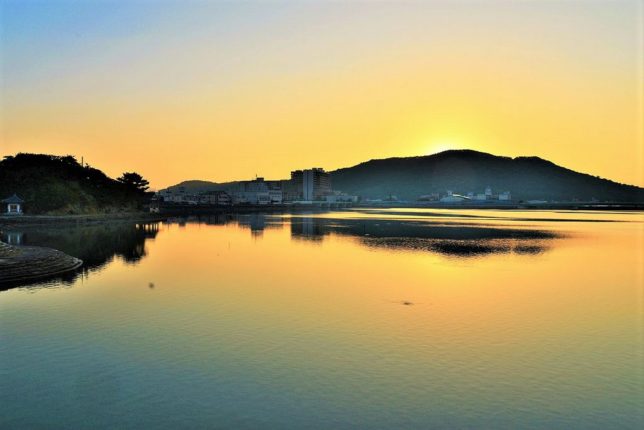
Kataonami, a natural wharf protecting the mouth of the Waka-gawa River is one of the longest beaches in the Wakanoura area. It is stretching for about 1,200 metres. Visitors can enjoy strolling along the beach and picturesque scenery.
During the summer, the white sand beach and blue-green water draws many visitors. Kataonami also has a fully equipped modern beach house with changing rooms, lockers, showers, and toilets. There are also food and souvenir stands, and a green park.
Address : 7 Chome-4-2 Takajomachi, Wakayama, 640-8135
Access : You can reach to the bay area by numerous stations on the JR Kisei Line. Getting off at Kimiidera station will take you close enough to walk to the bay.
Bus : 30-minute bus ride from JR Wakayama station